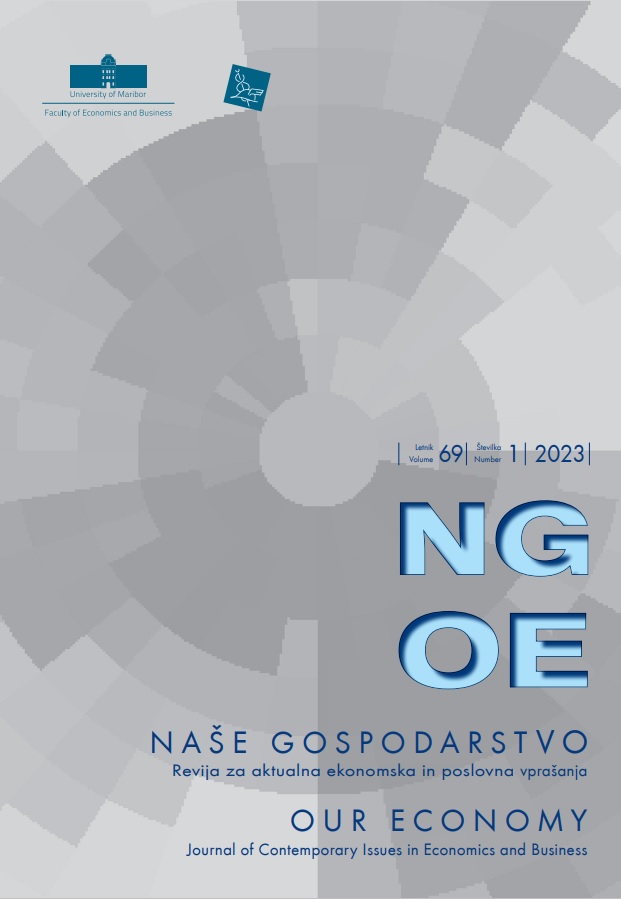Digital Divide and the Use of Digital Public Services During the COVID-19 Pandemic
Keywords:
Digital public services, E-government services, Citizens, Digital divide, Internet useAbstract
The COVID-19 pandemic enhanced digital transformation. With the spread of the pandemic and the introduction of epidemiological measures, citizens were enforced to use the Internet to an increased extent. The digital divide among citizens and the capability of citizens to get an equal level of services has also come to the fore. The paper explores the changes in the use of e-government services and the impact of the pandemic on the citizens’ attitudes toward Internet use in Croatia. The analysis is based on the survey data. The results show that due to the pandemic, citizens became more dependent on IT equipment. Citizens spend more time using digital public services than in the pre-pandemic period. The results also reveal differences in the COVID-19 impact on the use of digital public services between different groups of population.
Downloads
References
Acheampong, T. Y. (2021). Impact of Covid-19 on e-Commerce in the European Union. ENTRENOVA-ENTerprise REsearch InNOVAtion, 7(1), 89-98. DOI: https://doi.org/10.54820/VPRD4547
Al-Hujran, O., Al-Debei, M. M., Chatfield, A., & Migdadi, M. (2015). The imperative of influencing citizen attitude toward e-government adoption and use. Computers in Human Behavior, 53, 189–203. DOI: https://doi.org/10.1016/j.chb.2015.06.025
Alzahrani, L., Al-Karaghouli, W., & Weerakkody, V. (2018). Investigating the impact of citizens’ trust toward the successful adoption of e-government: A multigroup analysis of gender, age, and internet experience. Information Systems Management, 35(2), 124-146. DOI: https://doi.org/10.1080/10580530.2018.1440730
Bélanger, F., & Carter, L. (2008). Trust and risk in e-government adoption. The Journal of Strategic Information Systems, 17(2),165–176. DOI: https://doi.org/10.1016/j.jsis.2007.12.002
Carter, L., & Bélanger, F. (2005). The utilization of e-government services: Citizens trust, innovation and acceptance factors. Information Systems Journal, 15(2), 5–25. DOI : https://doi.org/10.1111/j.1365-2575.2005.00183.x
Chatzoglou, P., Chatzoudes, D., & Symeonidis, S. (2015). Factors affecting the intention to use e-Government Services. In Ganzha, M., Maciaszek, L., & Paprzycki, M. (Eds.), Proceedings of the 2015 Federated Conference on Computer Science and Information Systems, ACSIS (pp. 1489–1498). DOI: http://dx.doi.org/10.15439/2015F171
Crahay A., Di Giacomo D., Dussutour, C., Ennadif G., & Talpo, S. (2021). Report on Public Administrations’ Digital Response to COVID-19 in the EU. Directorate General for Informatics, European Commission, Luxembourg: Publications Office of the European Union. De R., Pandey, N., & Pal, A. (2020). Impact of digital surge during COVID-19 pandemic: A viewpoint on research and practice. International Journal of Information Management, 55, 102171, 1-6, DOI: https://doi.org/10.1016/j.ijinfomgt.2020.102171
DigitalEurope (2022). How to spend it: A digital investment plan for Europe. Retrieved from https://digital-europe-website-v1. s3.fr-par.scw.cloud/uploads/2020/10/DIGITALEUROPE_How-to-spend-it_A-digital-investment-plan-for-Europe.pdf.
European Commission (2023). Digital public services and environments. Retrieved from https://digital-strategy.ec.europa.eu/en/policies/digital-public-services.
European Commission (2021). eGovernment Benchmark 2021 – Entering a New Digital Government Era. Luxembourg: Publications Office of the European Union. Retrieved from https://digital-strategy.ec.europa.eu/en/library/egovernment-benchmark-2021.
European Commission. (2021a). 2030 Digital Compass: the European way for the Digital Decade. Communication from the Commission to the European Parliament, the Council, the European Economic and Social Committee and the Committee of the regions, COM(2021) 118 final, Brussels. Retrieved from https://eur-lex.europa.eu/legal-content/en/TXT/?uri=CELEX:52021DC0118.
European Commission. (2021b). Public sector modernisation for EU recovery and resilience. Retrieved from https://joint-research-centre.ec.europa.eu/system/files/2021-2/policy_brief_public_sector_modernisation_for_eu_recovery_and_resilience_final_20210210.pdf
European Commission. (2022). Digital Economy and Society Index (DESI) 2022 – Thematic chapters. Retrieved from: https://digital-strategy.ec.europa.eu/en/policies/desi.
European Parliament (2015). Bridging the digital divide in the EU. Briefing, December. Retrieved from https://www.europarl.europa.eu/RegData/etudes/BRIE/2015/573884/EPRS_BRI(2015)573884_EN.pdf.
Eurostat (2022). E-government statistics. Retrieved from https://ec.europa.eu/eurostat/statistics-explained/index. php?title=Digital_economy_and_society_statistics_-_households_and_individuals.
Eurostat. (2021). Digital economy and society statistics – households and individuals. Retrieved from https://ec.europa.eu/eurostat/statistics-explained/index.php?title=Digital_economy_and_society_statistics_-_households_and_individuals.
Hooda, A., Gupta, P., Jeyaraj, A., Giannakin, M., & Dwivedi, Y.K. (2022). The effects of trust on behavioral intention and use behavior within e-government contexts. International Journal of Information Management, 67, 102553. DOI: https://doi. org/10.1016/j.ijinfomgt.2022.102553
Kumar, V., Mukerji, B., Butt, I., & Persaud, A. (2007). Factors for Successful e-Government Adoption: a Conceptual Framework. The Electronic Journal of e-Government, 5(1), 63-76. Retrieved from https://academic-publishing.org/index.php/ejeg/article/view/464/427.
Lai, J., & Widmar, N.O. (2021). Revisiting the digital divide in the COVID-19 era. Applied Economic Perspectives and Policy, 43(1), 458-464. DOI: https://doi.org/10.1002/aepp.13104
Lator d.o.o. (2011). Razvoj širokopojasnog pristupa internetu na otocima: Metodologija i model projektiranja, ožujak, Zagreb: Hrvatska regulatorna agencija za mrežne djelatnosti. Retrieved from https://www.hakom.hr/UserDocsImages/2011/vijesti_najave_rasprave/Studija_otoci.pdf.
Lee, J. B., & Porumbescu, G. A. (2019). Engendering inclusive e-government use through citizen IT training programs. Government Information Quarterly, 36(1), 69–76. DOI: https://doi.org/10.1016/j.giq.2018.11.007
Li, F. (2022). Disconnected in a pandemic: COVID-19 outcomes and the digital divide in the United States. Health & Place, 77, 102867, DOI: https://doi.org/10.1016/j.healthplace.2022.102867
Mensah, I. K., & Mi, J. (2019). Computer self-efficacy and e-government service adoption: The moderating role of age as a demographic factor. International Journal of Public Administration, 42(2), 158–167. DOI: https://doi.org/10.1080/01900692.2017.1405980
Ministry of Regional Development and EU Funds (2022). Otoci. Retrieved from https://razvoj.gov.hr/o-ministarstvu/djelokrug-1939/otoci-i-priobalje/3834.
OECD (2007). Glossary of statistical terms, Digital divide. Organisation for Economic Co-operation and Development. Retrieved from https://stats.oecd.org/glossary/detail.asp?ID=4719.
Roseth, B., Reyes, A., & Yee, A.K. (2021). Public Services and Digital Government during the Pandemic: Perspectives of Citizens, Civil Servants, and Government Institutions. Inter-American Development Bank. DOI: http://dx.doi.org/10.18235/0003122
Samsami, M., & Schøtt, T. (2022). Past, Present, and Intended Digitalization around the World: Leading, Catching Up, Forging Ahead, and Falling Behind. Naše gospodarstvo/Our economy, 68 (3), 1-9. DOI: https://doi.org/10.2478/ngoe-2022-0013
Seifert, A., Cotten, S.R., & Xie, B. (2021). A Double Burden of Exclusion? Digital and Social Exclusion of Older Adults in Times of COVID-19. The Journals of Gerontology: Series B, 76(3), e99-e103. DOI: https://doi.org/10.1093/geronb/gbaa098
van Zoonen, L. (2016). Privacy concerns in smart cities. Government Information Quarterly, 33(3), 472-480. DOI: https://doi.org/10.1016/j.giq.2016.06.004
Vishanth W., Irani, Z., Lee, H., Hindi, N. & Osman, I. (2016). Are U.K. Citizens Satisfied With E-Government Services? Identifying and Testing Antecedents of Satisfaction. Information Systems Management, 33(4), 331-343, DOI: https://doi.org/10.1080/10580530.2016.1220216
Downloads
Published
Issue
Section
License
Copyright (c) 2023 Sunčana Slijepčević

This work is licensed under a Creative Commons Attribution-NonCommercial-NoDerivatives 4.0 International License.
